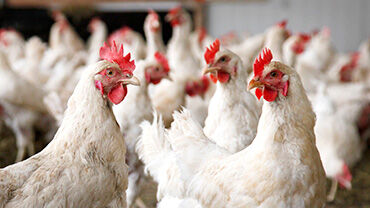2021-2022 data show largest avian flu epidemic in Europe ever
The 2021–2022 highly pathogenic avian influenza (HPAI) epidemic season is the largest observed in Europe so far. The latest data from the joint EFSA, ECDC and EU reference laboratory report show a total of 2,467 outbreaks in poultry, 48 million birds culled in the affected establishments, 187 detections in captive birds, and 3,573 HPAI events in wild birds. Additionally, the geographical extent of the outbreak is unprecedented, ranging from Svalbard islands to South Portugal and eastern to Ukraine, affecting 37 European countries.
Influenza viruses circulating in animal species such as pigs or birds can sporadically infect humans, causing mild to very severe disease. These viruses have the potential to severely affect public health, such as during the epidemics of avian influenza H5N1 in Egypt or H7N9 in China, or the 2009 H1N1 influenza pandemic caused by a virus initially spreading from pigs to humans. Despite the exceptionally large number of cases recently detected in poultry and birds as well as numerous transmission events of avian influenza to different mammal species, no human transmission has been observed in the EU/EEA in recent years. In addition, only a small number of human infections with asymptomatic or mild disease have been reported globally. Therefore, the overall risk to the population remains at low levels, but slightly higher to people in occupations where they are directly exposed to infected birds.
“Thankfully, there have been no human infections during the recent outbreaks of avian influenza in the EU/EEA” said Andrea Ammon, ECDC Director. “However, several groups of people, mainly those working in the animal sector, are at increased risk of exposure to infected animals. It is vital that clinicians, laboratory experts and health experts, both on the animal and human sectors, collaborate and maintain a coordinated approach. Vigilance is needed to identify infections with influenza viruses as early as possible and to inform risk assessments and public health action”, she added.
New guidance released today by ECDC stresses the importance of occupational safety and health measures to be taken at workplaces where animal contact cannot be avoided, and enhanced at those where zoonotic influenza in animals have been identified. Employers should periodically revise their workplace risk assessment and ensure that all necessary technical, organisational, maintenance and hygiene measures are taken to prevent the infection of workers. These measures include the avoidance of aerosol and dust, proper ventilation, separation of work and personal clothing, as well as measures to prevent contamination of workers accommodation.
Public health professionals and clinicians need to be aware of the need to test for infections in patients with respiratory illnesses and recent exposure to potentially infected animals. Testing for zoonotic influenza should also be considered in patients with severe acute respiratory disease of unknown origin, as well as severely ill patients with prior animal exposure. It is of utmost importance to identify transmission events early.
Preparedness plans, as well as regular training and simulation exercises covering zoonotic influenza updates, are additional important measures. Surveillance by genomic evaluation has become indispensable, and countries with available capacities and resources should use this in the identification of emerging zoonotic influenza viruses.







